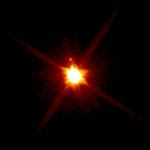OUR SOLAR SYSTEM: A GRAND DESIGN
In our last blog, we took a fascinating journey through the origins of the Universe, exploring how it came into existence, how it evolved over billions of years, and what might happen in the distant future. Today, let’s zoom in and focus on something much closer to home — our Solar System.
As I already mentioned earlier, the Milky Way Galaxy is home to countless solar systems, and ours is just one among them — a small family in a much larger cosmic neighborhood.
Let’s break down the term itself — ‘Solar’ means related to the Sun, so the Solar System is essentially a system formed by the Sun and the celestial bodies that revolve around it. These bodies include planets, dwarf planets, asteroids, comets, and more — all bound to the Sun’s gravitational embrace.
Now, here’s a little twist — we often think of these objects moving in circular orbits, but that’s not entirely true. In fact, they move in elliptical orbits.
Why is that?
This is where history meets science! Back in the day, Copernicus proposed that planets revolved around the Sun in perfect circular orbits. However, this idea was later disproved by the brilliant works of astronomers like Tycho Brahe and Johannes Kepler. Kepler, in particular, gave us the famous ‘Laws of Planetary Motion’, which showed that planets actually follow elliptical paths — slightly squashed circles — as they orbit the Sun.
But why elliptical orbits and not perfect circles? Well, two main forces are at play here:
1. Gravity:
The Sun’s gravitational pull is constantly tugging at the planets, keeping them from flying off into space.
2. Inertia (Tendency to Move in a Straight Line):
At the same time, planets naturally want to move in a straight line due to their inertia (a fancy word for resistance to any change in motion).
The result?
A delicate balance between these two opposing forces — the Sun’s gravity pulling inward and the planet’s inertia pulling outward — creates the elliptical orbits we observe today.
In short, every time you picture planets gracefully gliding around the Sun, remember — it’s a cosmic tug-of-war that’s been happening for billions of years, shaping the elegant dance of our Solar System.
Our Solar System is composed of the Sun, 8 planets, dwarf planets, asteroids, meteors, comets, and many moons.
Once upon a time, there were 9 planets in our Solar System. However, after a thorough study of Pluto, scientists concluded that Pluto does not fully qualify as a planet. But why?
To be officially recognized as a planet, a celestial body must satisfy three important conditions:
- It must orbit a star — in our case, the Sun.
- It must be big enough for its own gravity to shape it into a sphere.
- It must be massive enough that its gravity clears away any other objects of similar size near its orbit.
Pluto aced the first two criteria with flying colors, but unfortunately, it failed the third one. Pluto’s gravity was too weak to clear its neighborhood, meaning it shares its orbital region with other icy bodies. Because of this, Pluto was demoted to the status of a dwarf planet.
Pluto isn’t alone in this club — it’s now part of the dwarf planet family, which includes Eris, Ceres, Makemake (now, that’s a funny name — sounds like it’s desperately pleading: "Make me a planet! Make me a planet!" ), and Haumea.
Together, these dwarf planets are like students waiting at the doorstep of the prestigious "Planet Club", hoping that one day, they’ll finally meet all the criteria and become full-fledged planets. Until then, they’re happy to shine in their own unique way, reminding us that being different isn’t always a bad thing.
The planets in our Solar System can be classified into two major groups:
- Rocky Planets
- Gaseous Planets
The rocky planets in our Solar System are Mercury, Venus, Earth, and Mars. They are called rocky because they are primarily composed of rocks and metals. Earth is the largest among the four rocky planets, followed by Venus. Compared to the gas giants, the rocky planets are much smaller.
The gaseous planets, also known as gas giants, are Jupiter, Saturn, Uranus, and Neptune. These planets are composed mainly of gases like Hydrogen and Helium. Jupiter is the largest of all the gas planets and is also the largest planet in our Solar System.
There are also some common misconceptions about planets. One such misconception is that Saturn is the only planet with rings — this is incorrect. In reality, all the gas giants have rings, but Saturn's rings are the most prominent and easily visible. Another popular misconception is that Mercury, being the closest planet to the Sun, is the hottest. This is also incorrect. Venus holds the title of the hottest planet in our Solar System, due to its thick atmosphere of carbon dioxide and dense clouds that trap heat, making its surface extremely difficult to observe directly.
The Universe is vast, limitless, and still holds countless secrets hidden within layers of unexplored facts. We must continue to explore, to question, and to seek — because imagination and research have no limits.

.jpg)


.jpg)



Comments
Post a Comment